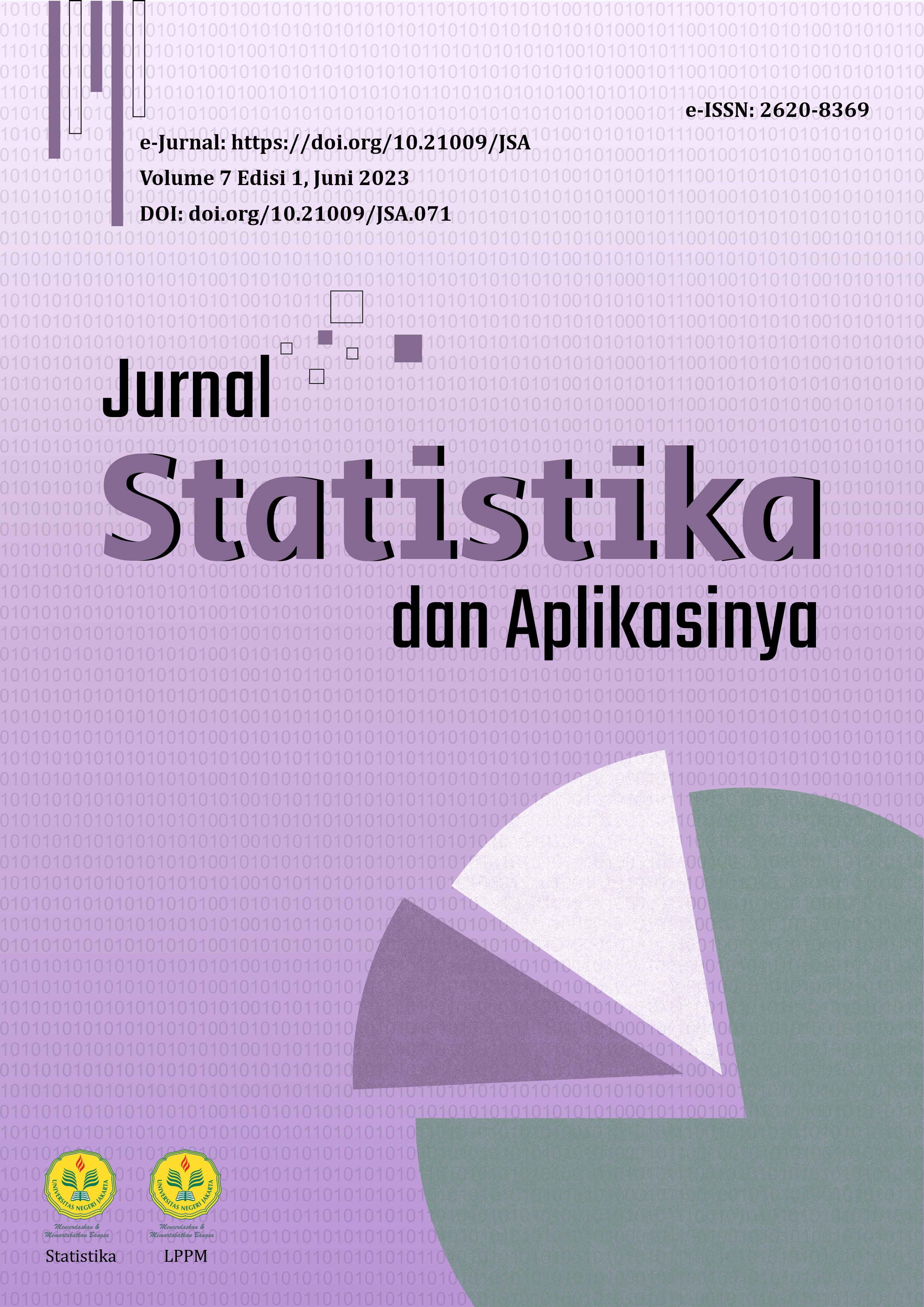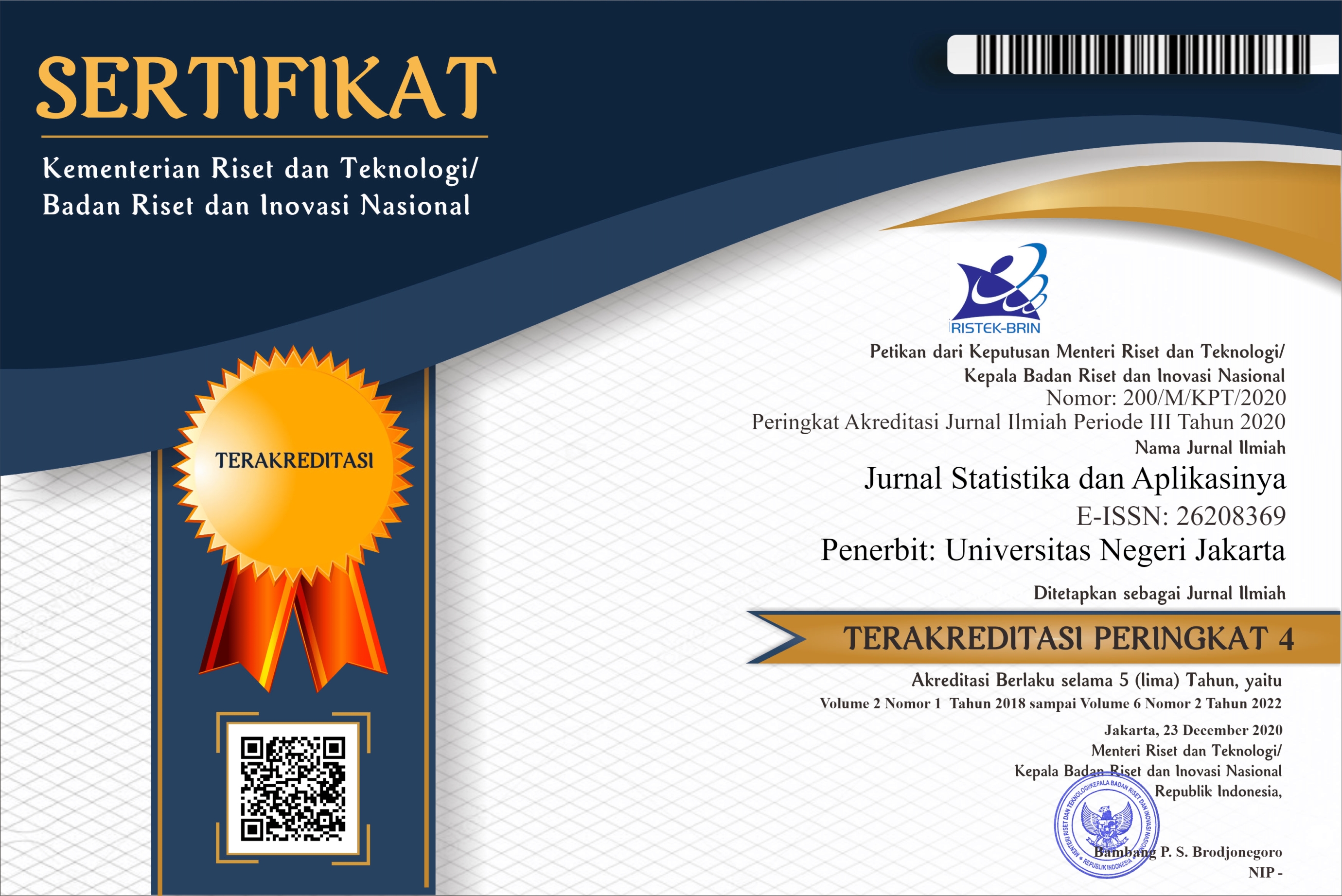Model Hibrid Harmonik, ARMA dan Outlier Curah Hujan di Surabaya, Malang dan Banyuwangi
DOI:
https://doi.org/10.21009/JSA.07102Keywords:
ARMA and outliers, ENSO, Harmonics, Monsoon, SunspotAbstract
The main factors affecting the climate in Indonesia are Monsoons, El Nino Southern Oscillation (ENSO) and sunspot cycles. Another influence is local characteristics, namely the geography and topography of each region. The harmonic model is an applied statistical model of Fourier series analysis. Because the harmonic model is a deterministic model with residuals that often still have autocorrelation, it is necessary to add a stochastic Autoregressive Integrated Moving Average (ARIMA) model. With the existence of 3 main factors that influence the climate in Indonesia with different seasonal periods, plus local influences, the bulk modeling with seasonal ARIMA, double S ARIMA is not enough so that a combination of harmonics, ARMA and Additive Outliers (AO) appears. The purpose of this study is to find the periodicity of rainfall and model rainfall time series data with hybrid harmonics, ARMA outliers. Periodogram analysis of monthly rainfall data for three cities in East Java shows a 1-year seasonal return period influenced by monsoons, an 11-year return period influenced by sunspots that cannot be detected. The monthly rainfall model for Surabaya is the 2nd order harmonic hybrid model, ARMA([1,9,11],0,0) and the outlier type






